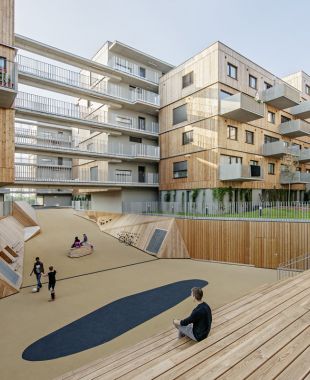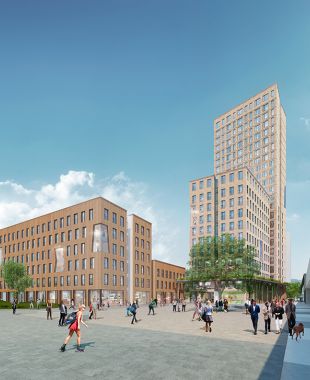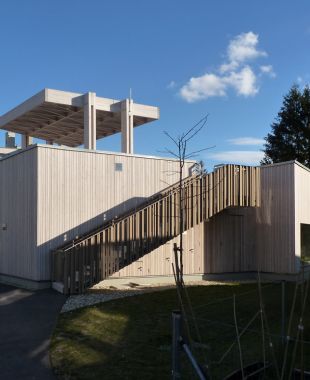TIMBER ARCHITECTURE IN VIENNA
The proportion of innovative buildings made using wood and wood compounds continues to grow as the legal situation improved over the past 15 years and laminated timber construction has become better established.
Residential buildings in Spöttelgasse (Hubert Rieß, 2005) and Mühlweg (Dietrich|Untertrifaller, Hubert Rieß, Hermann Kaufmann, 2006) were the first pilot projects, followed by many more. Presently the HoHo by Rüdiger Lainer + Partners, a 24-floor mixed-use-block (retail, services, office, hotel) and currently one of the highest timber-(hybrid-)buildings worldwide, is a model for future developments. Kindergartens, schools, business centres, roof conversions and extensions – where the low weight of the material plays an important role – are being built in wood more and more often.
The advantages of wood are numerous: Sustainable thanks to its CO2 neutrality, available regionally and easy to process; time and cost saving thanks to prefabrication of individual components or whole room modules; easily recyclable and offering high energy value in the event of demolition; high quality tactile and climatic properties that especially enhance the feeling of comfort when wood surfaces are visible. These characteristics make wood appealing as a material in new buildings as well as for conversions, as many examples in Vienna demonstrate.



